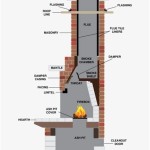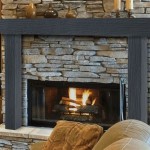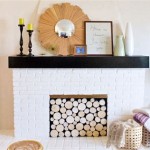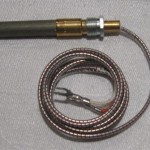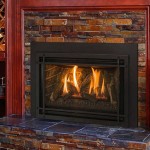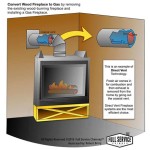How To Hide Wires Over Fireplace: A Comprehensive Guide
Hiding wires above a fireplace presents a unique set of challenges. The fireplace area is often a focal point in a room, and exposed wiring can detract significantly from its aesthetic appeal. More importantly, heat generated by the fireplace can pose a safety hazard if wiring is not properly protected. This article will provide a detailed guide on various methods for concealing wires above a fireplace, addressing both aesthetic and safety concerns. The information presented aims to enable readers to tackle this project effectively, regardless of their DIY experience level, while emphasizing adherence to safety protocols and building codes.
Before attempting any wiring project, it is imperative to disconnect the power supply to the circuit in question. Locate the appropriate circuit breaker in the electrical panel and switch it off. Double-check that the power is off by using a non-contact voltage tester on the wires you intend to work with. This precaution is absolutely crucial to prevent electrical shock.
Furthermore, always consult local building codes and regulations regarding electrical work and fireplace installations. Some jurisdictions may require a licensed electrician to perform certain types of wiring or may have specific requirements for wire placement near heat sources. Familiarizing yourself with these regulations beforehand will ensure that your project is compliant and safe.
Assessing the Situation and Planning Your Approach
The first step in concealing wires is to assess the existing situation. Determine the number and types of wires that need to be hidden. This includes power cords for televisions, soundbars, and other devices, as well as HDMI cables, speaker wires, and network cables. Understanding the scope of the project will help you choose the most appropriate method for wire concealment.
Examine the construction of the fireplace and the surrounding wall. Is it brick, stone, drywall, or a combination of materials? The type of material will influence the tools and techniques required for installation. Drywall is generally easier to work with than brick or stone, allowing for simpler in-wall wiring solutions. Brick or stone may require more specialized tools and techniques, such as drilling through masonry.
Consider the location of power outlets and cable jacks. If there are no existing electrical outlets near the desired location for the television or other devices, you may need to install a new outlet. This typically involves running a new electrical cable from an existing outlet or the electrical panel. This is where consulting a licensed electrician might be necessary, especially if you lack experience with electrical wiring.
Finally, plan the route that the wires will take. The goal is to create the shortest and most direct path possible while ensuring that the wires are protected from heat and physical damage. Avoid running wires directly behind the fireplace firebox or chimney, as these areas can get extremely hot. Ensure that the planned route complies with all applicable building codes and safety regulations.
Methods for Hiding Wires
Several methods can be employed to hide wires above a fireplace, each with its own advantages and disadvantages. The best approach will depend on the specific circumstances of the installation and the desired aesthetic.
Wire Management Channels: These are paintable plastic or metal channels that attach to the wall surface and conceal the wires within. Wire management channels are a relatively simple and inexpensive solution that requires minimal tools and expertise. They are available in various sizes and styles to accommodate different numbers of wires and aesthetic preferences. The channels can be attached to the wall using adhesive or screws, and they can be easily cut to length to fit the desired route. While effective, wire management channels are visible and may not be the most aesthetically pleasing option for all applications.
In-Wall Wiring Kits: These kits allow you to run wires inside the wall cavity, completely concealing them from view. An in-wall wiring kit typically includes a power inlet, a power outlet, and a drill template. The power inlet is installed near an existing outlet, and the power outlet is installed at the desired location for the television or other device. A fish tape is used to pull the electrical cable through the wall cavity between the inlet and the outlet. In-wall wiring kits provide a clean and professional look, but they require more skill and effort to install than wire management channels. They also require careful consideration of existing wall studs and other obstructions.
Recessed Media Boxes: These are specialized boxes designed to be installed within the wall cavity behind a television or other media device. Recessed media boxes provide ample space for storing excess wiring and concealing AV components, such as cable boxes and streaming devices. They typically include knockouts for installing electrical outlets and cable jacks, and they can be easily painted to match the surrounding wall. Recessed media boxes offer a high degree of concealment and organization, but they can be more expensive and complex to install than other methods.
Using Existing Cavities: In some cases, the wall cavity behind the fireplace may already contain existing conduits or pathways that can be used to run wires. This is particularly common in newer homes that are pre-wired for media equipment. If existing conduits are available, you can simply run the wires through the conduits using a fish tape. This is a relatively simple and straightforward solution that minimizes the need for drilling and cutting.
Masonry Installation: Hiding wires behind brick or stone fireplaces requires specialized techniques due to the difficulty of drilling and cutting these materials. One option is to use surface-mounted conduit that is painted to match the color of the brick or stone. Another option is to chase the wires into the mortar joints between the bricks or stones. This requires using a masonry chisel or grinder to create a channel for the wires, and then filling the channel with mortar to conceal the wires. This method is more labor-intensive and requires a higher degree of skill, but it can provide a more seamless and integrated look.
Safety Considerations
Safety is paramount when working with electrical wiring, especially in proximity to a fireplace. The intense heat generated by the fireplace can damage wiring insulation and create a fire hazard if the wiring is not properly protected. Several precautions should be taken to mitigate these risks.
Use Heat-Resistant Wiring: When running wires near a fireplace, use heat-resistant wiring that is specifically rated for high-temperature environments. These wires are typically insulated with a special material that can withstand temperatures up to 105 degrees Celsius (221 degrees Fahrenheit). Standard electrical wiring is not designed for these temperatures and can become brittle and crack over time, leading to short circuits and fires.
Maintain Proper Clearance: Ensure that the wires are kept a safe distance from the fireplace firebox and chimney. Building codes typically specify minimum clearance requirements for electrical wiring near heat sources. Follow these requirements carefully to prevent the wires from overheating. If possible, run the wires through a conduit or other protective sleeve to further insulate them from the heat.
Use Fire-Rated Materials: When installing in-wall wiring or recessed media boxes, use fire-rated materials that are designed to resist the spread of fire. These materials typically have a higher melting point and will help to contain a fire in the event of an electrical malfunction. Fire-rated materials are particularly important when running wires through fire-rated walls or ceilings.
Step-by-Step Installation Guide (Example: In-Wall Wiring Kit)
This section provides a step-by-step guide for installing an in-wall wiring kit to hide wires above a fireplace. This is just an example, and the specific steps may vary depending on the kit you are using and the construction of your fireplace and wall.
Step 1: Identify Stud Locations: Use a stud finder to locate the wall studs behind the television. Mark the location of the studs with a pencil. You will need to avoid these studs when cutting the holes for the power inlet and outlet.
Step 2: Cut the Hole for the Power Inlet: Use the drill template included with the wiring kit to mark the location of the hole for the power inlet near an existing electrical outlet. Use a drywall saw or a hole saw to cut the hole. Be careful not to cut through any wires or pipes that may be inside the wall.
Step 3: Cut the Hole for the Power Outlet: Use the drill template to mark the location of the hole for the power outlet at the desired location for the television. Use a drywall saw or a hole saw to cut the hole, avoiding the wall studs.
Step 4: Install the Power Inlet: Insert the power inlet into the hole and secure it in place using the screws or clips provided with the kit. Connect the power inlet to the existing electrical outlet using a short length of electrical wire. Ensure that the wires are properly connected and that the connections are secure.
Step 5: Install the Power Outlet: Insert the power outlet into the hole and secure it in place using the screws or clips provided with the kit. Connect the power outlet to the power inlet using a fish tape to pull the electrical cable through the wall cavity. Ensure that the wires are properly connected and that the connections are secure.
Step 6: Test the Connection: Turn on the power at the circuit breaker and test the power outlet to ensure that it is working properly. Use a voltage tester to verify that the outlet is properly grounded.
Step 7: Conceal the Wires: Once the wiring is complete, conceal the wires behind the television or other device. Use wire ties or cable clamps to keep the wires organized and prevent them from dangling.
Aesthetic Considerations and Finishing Touches
While functionality is important, the aesthetic appeal of the installation should not be overlooked. After the wiring is hidden, take some time to address any finishing touches that will enhance the overall look of the fireplace area.
Paint or Conceal Wire Management Channels: If you have used wire management channels, paint them to match the color of the wall or fireplace. This will help them blend in and become less noticeable. Alternatively, you can conceal the channels behind decorative trim or molding.
Caulk and Patch Holes: Fill any holes or gaps around the power inlets and outlets with caulk or drywall putty. This will create a seamless and professional look. Sand the putty smooth and paint it to match the surrounding wall.
Organize and Conceal AV Components: Use a media console or cabinet to organize and conceal AV components such as cable boxes, streaming devices, and game consoles. This will help to keep the area clutter-free and visually appealing.
Consider Cable Sleeves: Use decorative cable sleeves to bundle and organize exposed cables, such as those connecting the television to the media console. Cable sleeves are available in various colors and materials and can add a touch of sophistication to the installation.

Tv Wall Mount Installation With Wire Concealment Over Fireplace

How To Hide Tv Wires Above A Fireplace When You Can T Go Through The Wall Homes I Have Made

How To Hide Tv Wires Above A Fireplace When You Can T Go Through The Wall Homes I Have Made

How To Hide Cable Wires When Mounting Tv Over Fireplace Hometalk

How To Mount A Tv Over Brick Fireplace And Hide The Wires Designing Vibes Interior Design Diy Lifestyle

Hiding Wires On Wall Mounted Tv Above Fireplace Extension Kit Powerbridge

How To Hide Wall Mounted Tv Cords Above A Fireplace Without An Electrician In My Own Style

Tv Wall Mount Installation With Wire Concealment Over Fireplace

Learn How To Hide Tv Wires In A Wall Julie Blanner

Pin On Family Room
Related Posts

